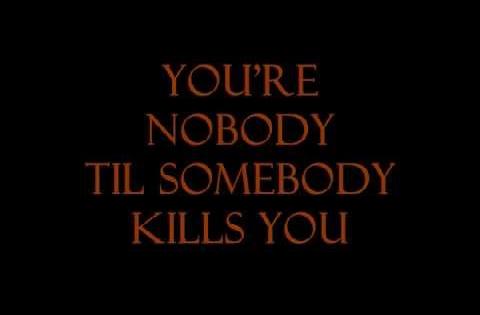You're Nobody 'Till Somebody Kills You: Baltimore, Freddie Gray and the Problem of History

As residents of Maryland and the nation brace for what could potentially be another night of civil unrest in Baltimore, it is important to pause and reflect on what has brought us to the current moment. It would be easy to attribute the violence now taking place in the nation's 20th largest city to external factors including the rash of police killings that sparked the national Black Lives Matter campaigns. These grass roots efforts demand greater accountability and oversight of the police. One could also locate the roots of the unrest deep in the tangles of both Baltimore and the nation's troubled history with race and policing. Both have merits.
Long before video surfaced of a battered Freddie Gray being hoisted into a police van,students working on an African American history project at the Maryland historical society were uncovering one of the forgotten turning points of Baltimore's history, also coalescing around race and policing nearly three quarters of a century ago.
On February 1, 1942, a Baltimore police officer named Edward Bender killed an African American serviceman named Thomas Broadus in an incident of police brutality. Broadus's death mobilized the city's Black community. According topublished accounts, the altercation began after Bender stopped Broadus and three companions for trying to hail an unlicensed taxi. The incident turned violent after Broadus insisted he was free to spend his money in whatever way he chose. Angered, Bender seized him and began beating him with his nightstick. When Broadus managed to break free, the crowd that gathered at the scene pressed him to flee. Although injured, Broadus attempted to stagger from the scene but not before Bender took careful aim and shot him in the back. He then proceeded to where Broadus was trying to take cover under a parked car and shot him in the back a second time. To the horror of witnesses, he then began kicking Broadus and threatened to shoot several bystanders who volunteered to transport the wounded solider to the hospital. Broadus died later that night. Bender, who was also responsible for the killing of another black man, was initially charged with murder by a grand jury. However when they reconvened after a several day recess, they changed their vote and Bender was never prosecuted.
Angered by the killing, and after more than a month of organizing, on April 24 some 2,000 black protesters made their way to the state capital at Annapolis to demand an immediate end to segregation and police brutality in Baltimore. After the demonstration and meetings with Black leaders, Governor Herbert R. O'Conor assigned a Commission on Problems Affecting the Negro Population and ushered in a series of modest changes including the hiring of three uniformed black patrolmen. O'Conor's plodding pace however caused one black leader to warn of the possibility that, "a serious racial conflict may result unless some remedial steps are taken."Another complained, "Our people are being taught that policemen do not move among to protect them and uphold the law, and to say the least, it is producing a damning psychology which in the end must lead to disaster."
It is a familiar forecast to what we have witnessed over the past year in communities from Ferguson, Missouri to Staten Island, New York where the killing of unarmed men of color has garnered national attention, but not necessarily national action. Now as broadcast images of rock-throwing looters clashing with police and setting fire to cars threatens to displace the discussion of police violence, we have an even greater responsibility to be mindful of the past and the unfulfilled promises of justice that haunt the pages of history and silently condemn the indifference of the present. In this sense, Freddie Gray is no more unique than a half century of victims, like Thomas Broadus, whose names are now attached to violent urban uprisings. They mock us from the pages of history divorced from the social, political, and economic conditions that fed the social unrest to which their names are now attached. The faces and locations change but the agents of the killing or beating in each case have not. By ignoring that history we also ignore our collective responsibility to address the persistent problem of police brutality on persons of color.
When I was a graduate student at Howard University in the 1990s, I often visited the U street corridor where remnants of the 1968 Washington, D.C. riot remained nearly three decades later. Baltimore will bear similar scars and, despite optimistic and triumphant talk of rebuilding, in a city where poverty and joblessness are rampant, residents are justified to scratch their heads about what is there left to rebuild.
Amidst all the talk of economic recovery it is important to note that those gains have not been general and that cities like Baltimore, Cleveland, and Detroit that were once thriving urban centers have become heavily policed islands of despair.
In this context, it perhaps understandable why Baltimore Mayor Stephanie Rawlings-Blake chose to restrain law enforcement rather than unleash the devastating force of You're Nobody 'Till Somebody Kills You: Baltimore, Freddie Gray and the Problem of History | Yohuru Williams:
